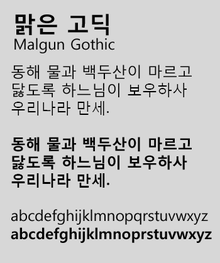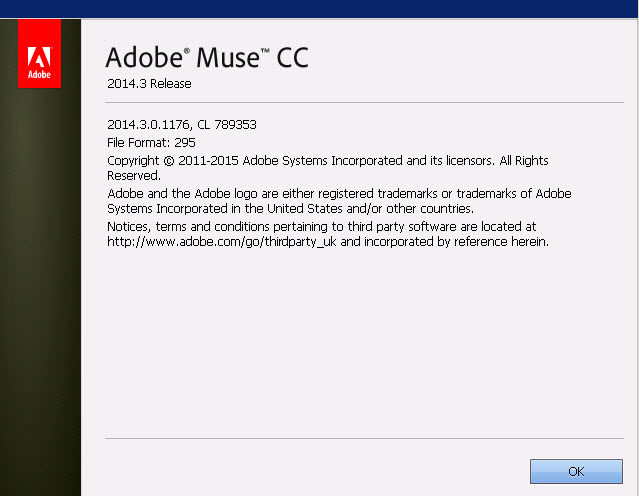- Adobe Simplified Chinese Support Package Prices
- Adobe Simplified Chinese Support Package Insert
- Simplified Chinese Windows Xp
Adobe Support Community. The Simplified Chinese font pack for Adobe Reader 10 is not easy to find through a Google search because so many similar packages are available. The download page for the Simplified Chinese font pack is the quickest way to get the font pack installed. Use the links above to get quick access to the Chinese Font pack for Adobe Reader X. 32-bit or 64-bit versions of Microsoft Windows 7 or Windows 10 in English, French, German, Japanese, Italian, Spanish, Brazilian Portuguese, Korean, Simplified Chinese, or Traditional Chinese. Note: Document security extension for Microsoft Office is also expected to work on Microsoft Surface devices.

This article explains how to deploy Adobe Acrobat DC if you are using Adobe Creative Cloud for teams Single App. It applies to both Acrobat Pro DC and Acrobat Standard DC.
Note:
If you have a Creative Cloud All Apps subscription, use Creative Cloud Packager for deploying Acrobat DC. See this page for detailed instructions.
To deploy Acrobat DC as Creative Cloud for teams Single App, perform the following steps in sequence:
- Optional step - Customize the Acrobat DC installer bits using Customization wizard.
Before you download Acrobat DC, ensure that your system meets the requirements:
| Windows | Mac | |
| Acrobat Pro DC (Continuous) | Acrobat Pro DC - Windows | Acrobat Pro DC - Mac |
| Acrobat Standard DC (Continuous) | Acrobat Std DC - Windows | n/a |
Notes:
- In Acrobat DC, there are two tracks - Continuous and Classic. Download Continuous track builds. For more information on tracks, visit - http://www.adobe.com/devnet-docs/acrobatetk/tools/AdminGuide/whatsnewdc.html.
- This installer is multilingual; it can install Acrobat in any of the languages Acrobat DC supports. See the installation section below for more details.
- Windows installers are self extracting exe files. Run the downloaded .exe once to extract the installer in the Acrobat DC folder on your desktop.
2. (Optional step) Use the Adobe Customization wizard
You can use the Adobe Customization wizard to further customize your Acrobat deployment. For more information, see the Adobe Customization wizard documentation (Windows / Mac). You can download the wizard from here - Windows / Mac.
After installation of Customization wizard, launch the wizard for Acrobat DC and follow the steps:
- Go to File > Open Package and then select Acrobat DC MSI in Acrobat DC installer folder – AcroPro.msi.
- Do the necessary customizations you desire (for example, you can accept EULA on behalf of your users here).
- Now go to Transform > click Save Transform. The installer is now ready to be deployed on the users machines.
To change installer package, do the following:
- Mount the Customization wizard DMG file.
- Copy 'Acrobat Customization wizard DC.app' from this mounted DMG volume to a writable folder, say on Desktop. (Running the wizard requires a writable area, so do not run it from a DMG disk image. Copy it to a folder and run it from there.)
- Run the application called Acrobat Customization wizard DC.app.
- In the Locate Installer text field, provide the path to the Acrobat DC installer package (.pkg file).
- Do the necessary customization you require (for example, Accepting EULA on user's behalf). Note: Serial Number field present there is optional.
- Click OK.
- A save dialog appears. Provide the name of final customized installer package with .pkg extension and save it to a folder on your machine.
- Next you can deploy this final output package on the users' machines.
Note:
Acrobat is configured to automatically ping Adobe servers to determine if there is a new patch/update available. If you want to change it for your deployment, you can do that using the Customization wizard.
Windows installers are
- Install in Command Line mode on the user's machine
- Install through GUI Mode on the user's machine.
- Install through standard deployment methods like SCCM.
3.1 Install in command line mode on a user's machine
Navigate to Acrobat DC folder in command prompt and run the following command:
Syntax example:
Setup.exe /sl '[LangCode]' /sALL
In the command above:
- [LangCode] is the numerical Acrobat Launch language code based on the following data:
2052=Chinese Simplified
1028=Chinese Traditional
1029=Czech
1030=Danish
1043=Dutch (Netherlands)
1033=English (United States)
1035=Finnish
1036=French (France)
1031=German (Germany)
1038=Hungarian
1040=Italian (Italy)
1041=Japanese
1042=Korean
1044=Norwegian (Bokmal)
1045=Polish
1046=Portuguese (Brazil)
1049=Russian
1051=Slovak
1060=Slovenian
1034=Spanish (Traditional Sort)
1053=Swedish
1055=Turkish
1058=Ukrainian
1025=English with Arabic support
1037=English with Hebrew support
6156=French (Morocco)
For example, if you pass “1033” in [LangCode], Acrobat launches in English.
3.2 Installation through GUI mode on a user's machine
In this method, you can simply copy the 'Acrobat DC' installer folder you extracted from the downloaded exe (and optionally customized) to a user's machine and run Setup.exe to start the installation.
3.3 Installation through standard deployment methods
You can also follow usual deployment practices for Acrobat as mentioned in Acrobat ETK – http://www.adobe.com/devnet-docs/acrobatetk/#.

The following example shows Acrobat Deployment through SCCM:
Run the downloaded exe to extract the installer in 'Acrobat DC' folder. By default, files are extracted to your desktop. Once extraction is completed, do not proceed with install yet. You will have the extracted installer files, which you will use to deploy Acrobat using SCCM. Follow the usual processes for creating a package for deployment in SCCM Configuration manager. Give the path of Setup.exe in the Create Program wizard in SCCM (see below).
Use it to deploy Acrobat using SCCM. Follow the usual processes for creating a package for deployment in SCCM Configuration manager. Give the path of Setup.exe in the 'Create Program wizard' in SCCM (see below).
Once you have deployed Acrobat, you can uninstall it using the usual process for uninstalling msi packages. It can be done individually using 'Add and Remove Programs' in Windows 'Control Panel'. Also it can be done using command line. Here is the command line syntax for uninstalling the Adobe Acrobat DC:
Syntax Example:
msiexec.exe /x <path to Acrobat msi file> /qn
To install Acrobat on macOS, simply install the downloaded installer package (or the customized package if you have to use the customization wizard).
macOS installers are .pkg type installers that provide the necessary user interface prompts to run.
You can use standard deployment practices on macOS like ARD to deploy the chained package. More information is available in Acrobat ETK: http://www.adobe.com/devnet-docs/acrobatetk/#.
You can deploy Acrobat DC Updates using standard deployment practices used in your organization. For more information about updates, seePatch release notes.
Deploy Adobe Acrobat purchased using the Adobe Value Incentive Plan (VIP) in a virtualized environment
For information on deploying Acrobat in a virtualized environment, see Virtualized Deployments.
A font can be embedded only if it containsa setting by the font vendor that permits it to be embedded. Embeddingprevents font substitution when readers view or print the file,and ensures that readers see the text in its original font. Embeddingincreases file size only slightly, unless the document uses CIDfonts. a font format commonly used for Asian languages. You canembed or substitute fonts in Acrobat or when you export an InDesigndocument to PDF.
You can embed the entire font, or just a subset of the charactersused in the file. Subsetting ensures that your fonts and font metricsare used at print time by creating a custom font name. That way,for example, your version of Adobe Garamond®,not your service provider’s version, can always be used by the serviceprovider for viewing and printing. Type 1 and TrueType fonts canbe embedded if they are included in the PostScript file, or areavailable in one of the font locations that Distiller monitors andare not restricted from embedding.
When a font cannot be embedded because of the font vendor’s settings,and someone who opens or prints a PDF does not have access to theoriginal font, a Multiple Master typefaceis temporarily substituted: AdobeSerifMM for a missing serif font,and AdobeSansMM for a missing sans serif font.
Adobe Simplified Chinese Support Package Prices
The Multiple Master typeface can stretchor condense to fit, to ensure that line and page breaks in the originaldocument are maintained. The substitution cannot always match theshape of the original characters, however, especially if the charactersare unconventional ones, such as script typefaces.
Note:
For Asian text, Acrobat uses fonts from the installed Asian language kit or from similar fonts on the user’s system. Fonts from some languages or with unknown encodings cannot be substituted; in these cases, the text appears as bullets in the file.
Note:
If you have difficulty copying and pasting textfrom a PDF, first check if the problem font is embedded (File >Properties > Font tab). For an embedded font, try changing thepoint where the font is embedded, rather than sending it insidethe PostScript file. Distill the PDF without embedding that font.Then open the PDF in Acrobat and embed the font using the Preflightfixup.
When converting a PostScript file toPDF, Distiller needs access to the file’s fonts to insert the appropriateinformation in the PDF. Distiller first searches the PostScriptfile for Type 1, TrueType, and OpenType fonts. If the font isn’t embeddedin the PostScript file, Distiller searches additional font folders.Distiller searches the following font folders in Windows:
/Resource/Font in the Acrobat folder
/Program Files/Common Files/Adobe/Fonts
Distiller searches the following font folders in Mac OS:
/Resource/Font in the Acrobat folder
/Users/[user name]/Library/Fonts
/Library/Fonts
/System/Library/Fonts
The Acrobat installation includes width-only versions of many common Chinese, Japanese, and Korean fonts, therefore Distiller can then access these fonts in Acrobat. Make sure that the fonts are available on your computer. (In Windows, choose Complete when you install Acrobat, or choose Custom and select the Asian Language Support option under the View Adobe PDF category. In Mac OS, these fonts are installed automatically.)
For information on including fonts in a PostScript file, see the documentation that came with the application and printer driver you use to create PostScript files.
To specify other font folders for Distiller to search, in Acrobat Distiller, choose Settings > Font Locations. Then in the dialog box, click Add to add a font folder. Select Ignore TrueType Versions Of Standard PostScript Fonts to exclude TrueType fonts that have the same name as a font in the PostScript 3 font collection.
Note:
To provide Distiller with access to a font folder that has been moved, use this dialog box to remove the folder listed in its old location and add it in its new location.
You can create a printable previewof your document that substitutes default fonts for any text formattedin fonts that are available on your local computer but are not embeddedin the PDF. This preview can help you decide whether to embed thoselocal fonts in the PDF, to achieve the look you want for your document.
- In the Preferences dialog box under Categories,select Page Display, and then deselect UseLocal Fonts.
Note:
If a font cannot be substituted, the text appears asbullets, and Acrobat displays an error message.
Ifyou need to enter a font name manually on the Fonts panel of the AdobePDF Settings dialog box, you can use a PDF to find theexact spelling of the name.
Adobe Simplified Chinese Support Package Insert

Simplified Chinese Windows Xp
- Use any application to create a one-page documentwith the font.
Open the PDF in Acrobat, and choose File > Properties > Fonts.
- Write down the name of the font, using the exact spelling,capitalization, and hyphenation of the name as it appears in theFont Info dialog box.